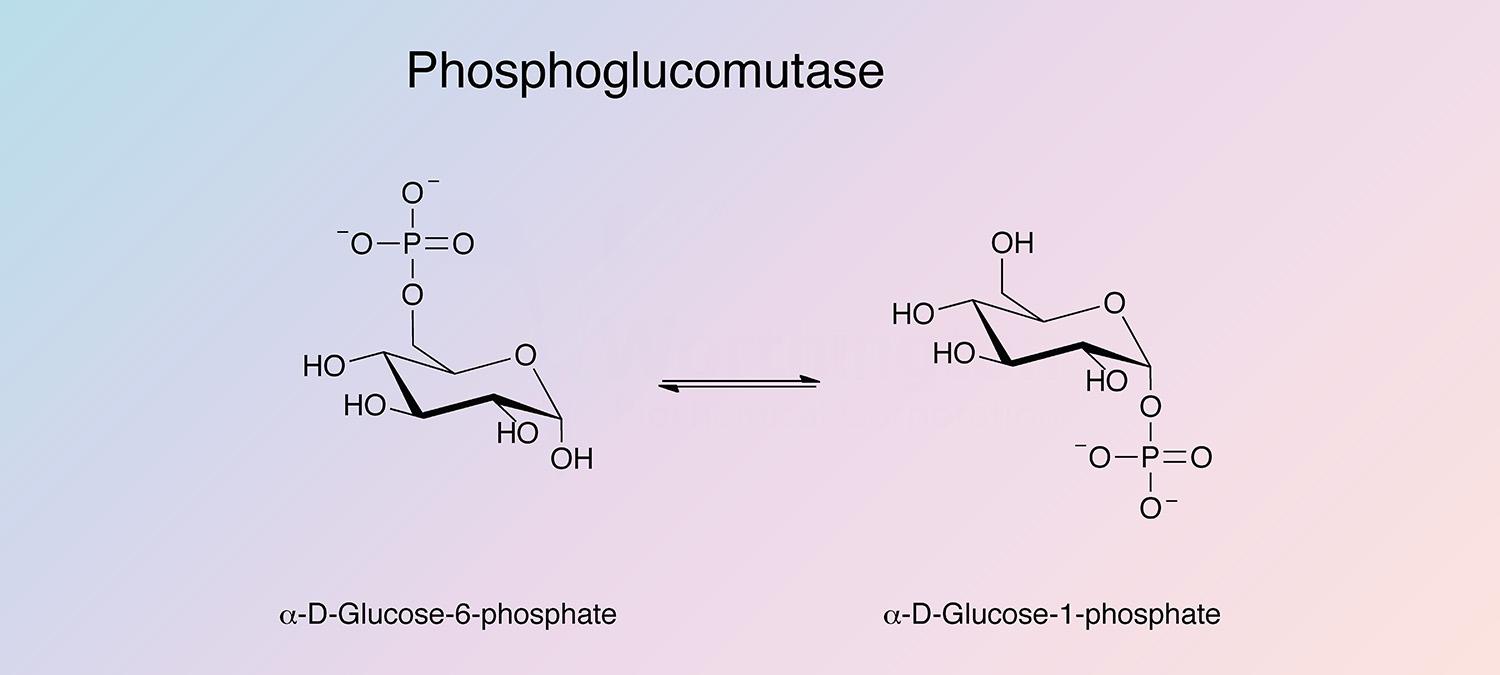For our international customers, please be advised that orders cannot be placed through our website by customers in countries with International Distributor representation.
Phosphoglucomutase - Manual
Phosphoglucomutase (PGM) will interconvert the 1- and 6-phosphate isomers of a-D-glucose. Although it is a reversible reaction, the formation of glucose-6-phosphate is markedly favored. PGM will not convert β-D-glucose-1-phosphate or β-D-glucose-6-phosphate.
Characteristics of Phosphoglucomutase from Rabbit Muscle:
Approximately 62,000 daltons (Bergmeyer 1983).
7-5 - 8.0.
![]() = 7.70 (Najjar 1955).
= 7.70 (Najjar 1955).
Divalent cations, expecially Mg++, glucose-1,6-bisphosphate and glutathione. Histidine, 8-hydroxyquinoline, and other metal-binding agents also stimulate the enzyme (Sutherland 1949).
High concentrations of chelating agents, gluconate-6-phosphate, nucleotides, and acetate.
The enzyme is quite stable when dissolved in acetate buffer at pH 5.0. Its activity can be maintained for about 10 days at 2 - 8°C., then declines slowly over a period of 6 to 8 weeks. Najjar (1955) reports that below pH 4.5 and above pH 8.5 it is readily inactivated. In the crystalline state it is stable for months in 0.60 to 0.65 saturated ammonium sulfate containing 0.05 M acetate buffer, pH 5.0.
